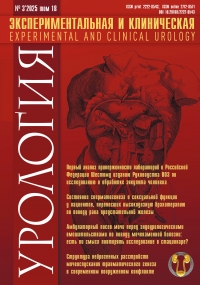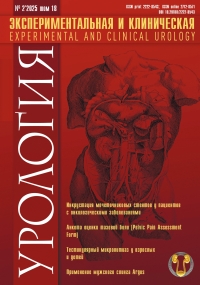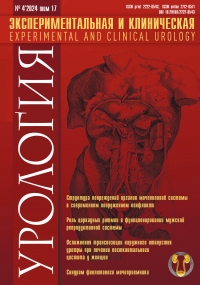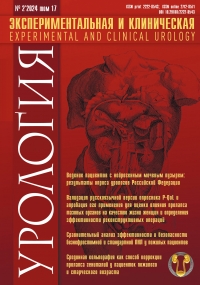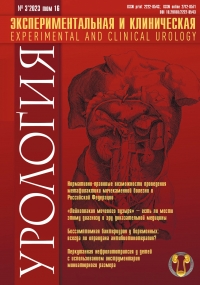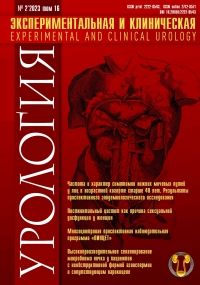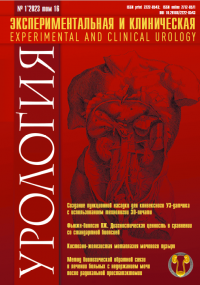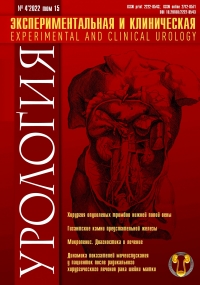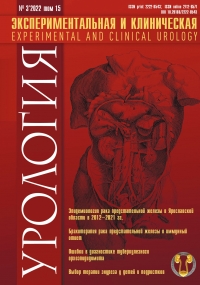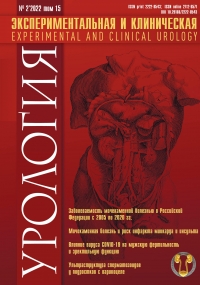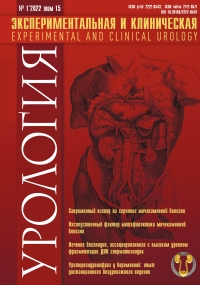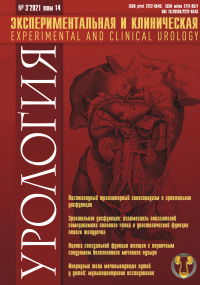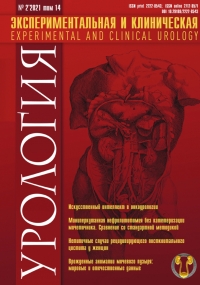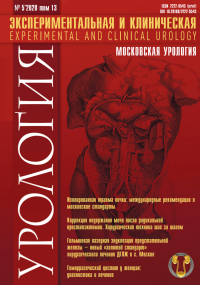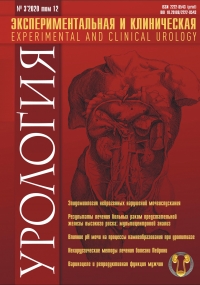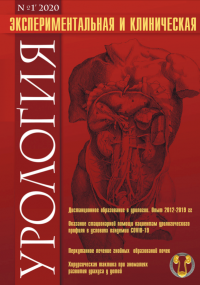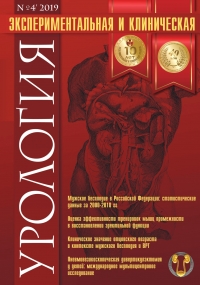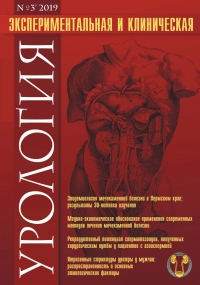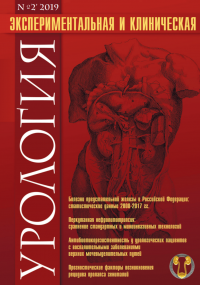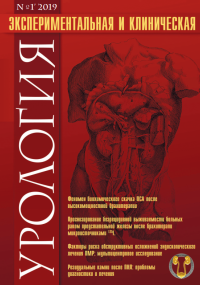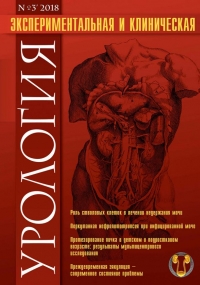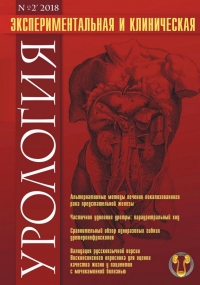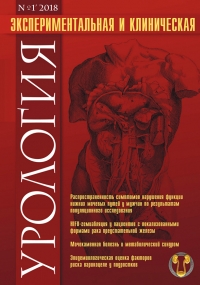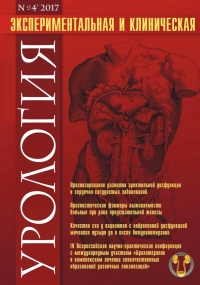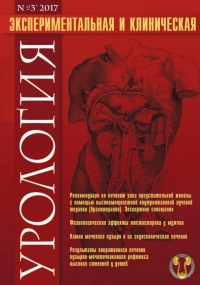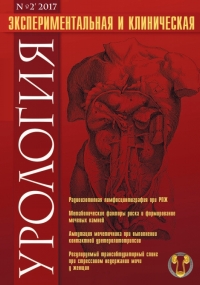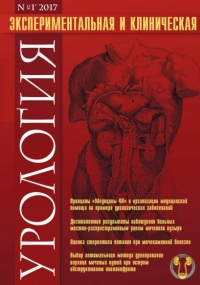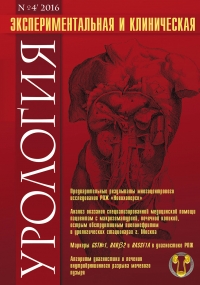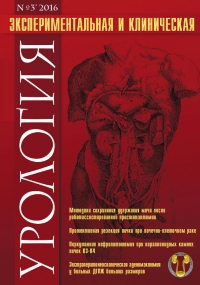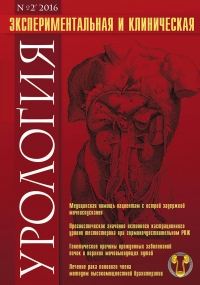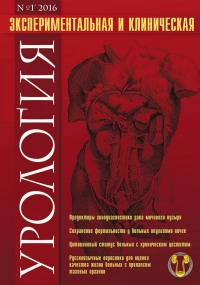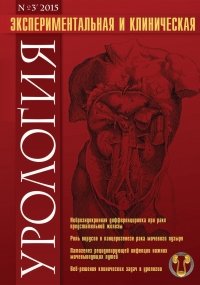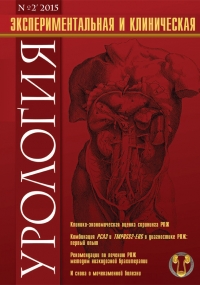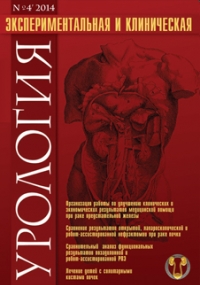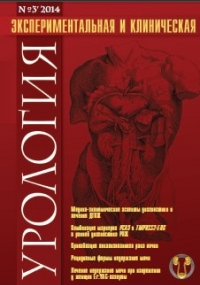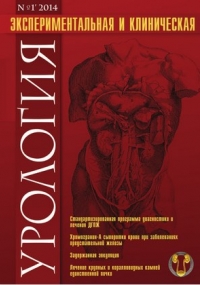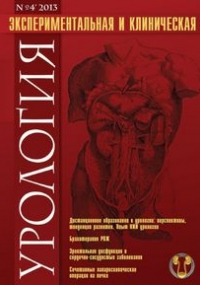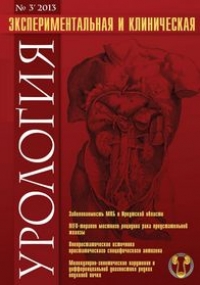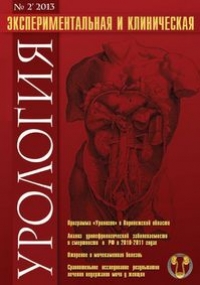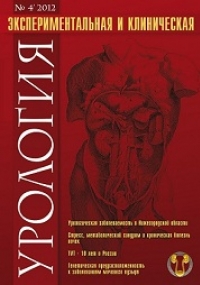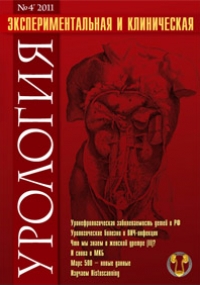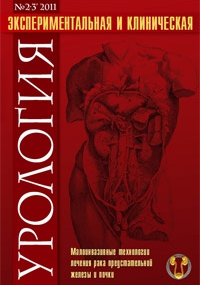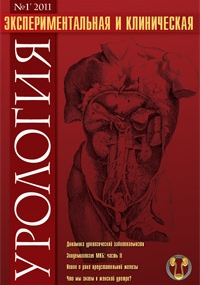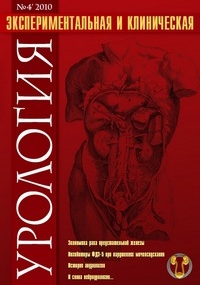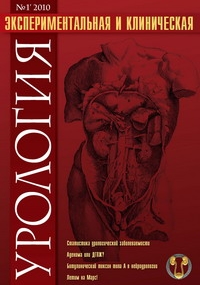Approaches to the urine lithogenicity assessment in patients with oxalate urolithiasis
 3460
3460 We have investigated the crystalforming activity of the urine in 111 patients (age 23-67 years) with oxalate urolithiasis, among them – 68 patients with non-recurrent form (39 male and 29 female patients) and 43 patients with recurrent form (27 men and 16 women). Eighty-six healthy patients without urological diseases were used as control (38 male and 48 female patients) with the age 21-62 years.
The speed of crystal formation of calcium oxalate was calculated based on the dynamics of calcium concentration decrease. The initial speed of crystal formation (ISKF) was estimated when urine from healthy patients or from patients with oxalate urolithiasis was added into the model system.
Index of the relative oversaturation of the urine – ROS (CaOx), as surrogate of the calcium oxalate lithogenesis, – was 2.52 times more in patients compared to healthy individuals. Diagnostic specificity of the ROS (CaOx) index was high – 87.5% with the sensitivity of 67.8% (p<0.0001).
ROS (CaOx) was also considered in the connection with ISKF, which reflects the dynamics of the crystal formation for calcium oxalate in system. Combined index showed better diagnostic properties with the sensitivity of 74.4% (ISKF only – 59.6%, p=0.029) and high specificity of 85.7%.
Combined index of ROS (CaOx) and ISKF allows the detailed estimation of the lithogenic properties of the urine in patients with oxalate urolithiasis and its characterization from different sides, showing the high sensitivity and specificity. is index could be used for the estimation of the risk for development of oxalate urolithiasis along with the common metabolic lithogenic factors, and also for efficacy control of the treatment.
| Attachment | Size |
|---|---|
| Download | 893.37 KB |


